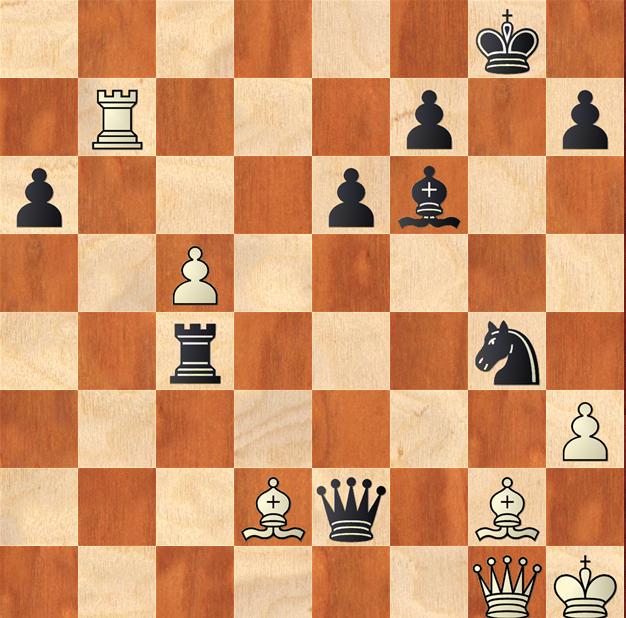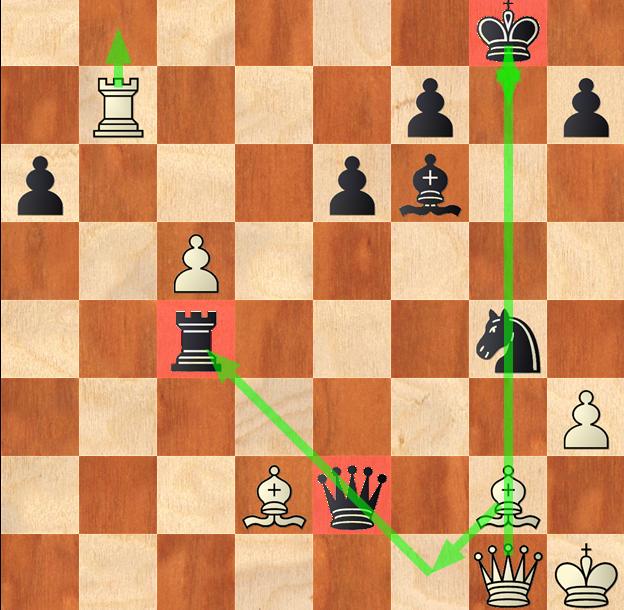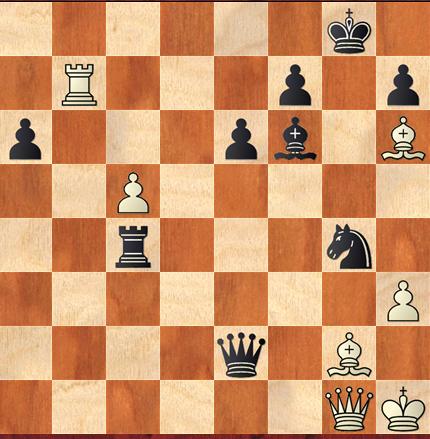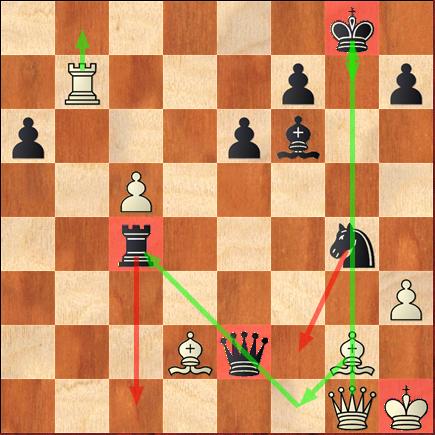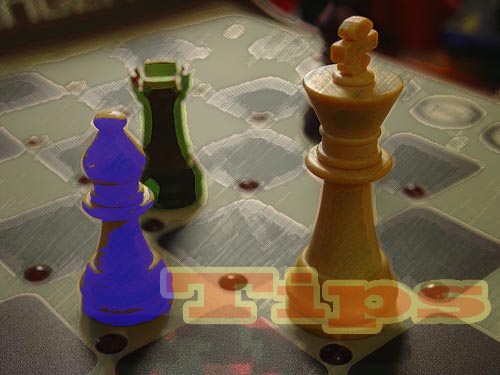In the game of Chess, tactics can be used for anything and everything that will ultimately lead to a favorable position in the short term and help us in finally achieving the goal of saying checkmate to the opponent. In this series of articles, we have been looking at the different aspects of tactics.
Tactics, in most cases, is required in almost all types of situations. More so in circumstances where the position is very bleak and unfavorable. Tactics sometimes has to be employed out of despair to overcome the unfavorable position.
Let us try to explore the effectiveness of tactics that was carried out out of desperation.
Take a look at the following diagram depicting the position after 42 moves of white and Black to make the move.
Black to Move

A quick look at the positions of the pieces reveals the following :
- The pawn structure of White pieces is well developed while the black pawns have weaknesses
- The passed pawn at c5 is well placed and the rooks at a4 and b2 will exert pressure on black’s double pawn structure at a6 and a7, if Black takes no efforts.
- White Knight at c3 is unduly exerting pressure on black pawn at d5
- Additionally, the black knight at f6 is passively supporting the pawn at d5, in that it cannot move from that place.
The following diagram can best explain this situation:

This is one ideal situation where the Black, placed in a highly precarious situation, need to come up with some sort of tactics to change the position and do something that will help him gain an upper hand over the opponent.
What are the options available for Black at this position?
Take a closer look at the white pieces once again. The White king is placed at f2. All the other major and minor pieces are placed on the Queenside. So, if any move is made to attack the King, then it will be difficult for the White o react as most of its pieces are on the Queenside.
Now, what can Black do now? It can either move the pawn at g5 to g4 to disturb the pawn structure and open the “f” file, if white pawn at f3 captures black pawn at g4. What are the other options available? A check on White King using Knight at f6 is one possibility.
What will happen if black gives the check by moving the Knight to g4 – Ng4+?
The white pawn at f3 can capture the Knight at g4 – fxg4. If that happens, the Black’s game is opened up and it might think of giving a check by moving the Rook at e6 to f6. Then White King has two options – either move to g3 or g1. If King moves to g3, the second rook at e7 can be moved to e3 to give a check to King on g3. What does this move do? The White’s Knight is pinned. See that how the things begin to happen. In case White king moves to g1 instead of g3, the position will be much easier for Black – a Check by rook at e7 to e1 would be curtains for White. Can you visualize how the things unfold out of nothing by a single move? This is what tactics is all about.
Having evaluated all these possible options, Black decided to move the Knight, to g4 to give a check on White King at f2.
42. ….. Ng4+
In response to the Black Knight’s threat with a check, the White, having evaluated all the possible options, decided to move the King to g3.
43. Kg3 ……
What should the Black do now? By moving the Knight, which is passively defending the black pawn at d5, the pawn at d5 is exposed. The Knight is also at threat now from white pawn at f3 and King at g3. There is no possibility for giving check on White King.
The Black moved the Knight at g4 to e3
43. …. Ne3
And the position at the end of the 43rd move is as follows:

This is a tactic employed by Black, which helped it to convert its weak position to one of strength. Can you visualize how it has been achieved?
Look at the following diagram:

The Black Knight, which was passively defending the pawn at d5 from f6 is now at e3, at a very active state, while at the same time supporting the pawn at d5. The black can move the pawn at f7 to f5 and then f4 to harass the White King. The Knight at e3 can also harass the White King by capturing the white pawn at g2. This is what tactics is all about. It need not be a grand plan. But a series of small moves, two or three that alters the course of the game.
In this case, the weak location of the black pieces has been transformed to one of strength by a simple tactical move.
By the way, the Black went on to win the game after a series of moves, as given hereunder.
44. h3 f5
45. Kf2 f4
46. Rab4 Kf7
47. Rb8 a5
48. R8b7 a4
49. Rxe7+ Rxe7
50. Ra2 Rb7
51. Ke2 Rb3
52. Nxa4 Nf5
53. Kf2 Nxd4
54. Rd2 Rb4
55. Nc3 Ke6
56. Ne2 Nb3
57. Rc2 Rc4
58. Ra2 a5
White resigned accepting the defeat.
